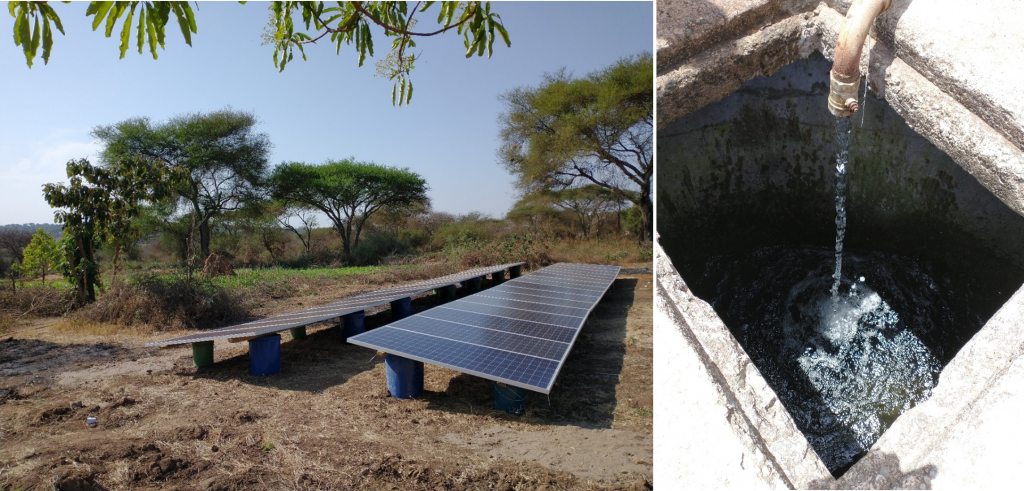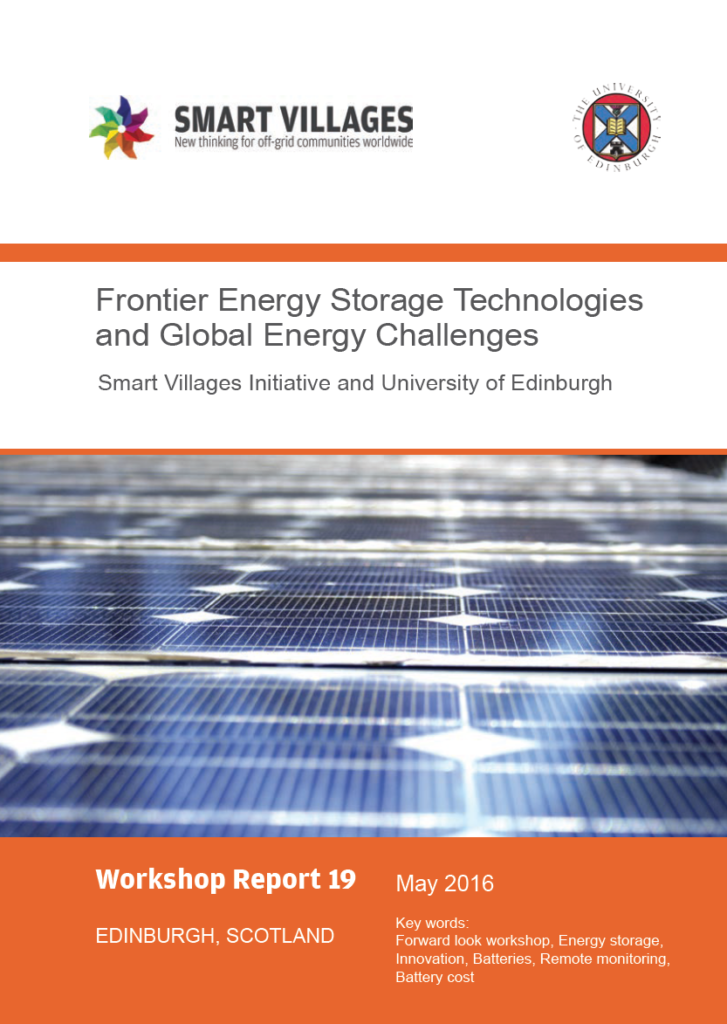Solar panel systems can be expensive and time-consuming to build. They can require specialist knowledge to set up, and be difficult to maintain. In rural communities, it can make a huge difference if a solar panel system can be made simply and at a lower cost. That’s why Smart Villages is always on the lookout for innovative solutions to make these systems easier and cheaper to build in local contexts.
Enter – the solar bucket mounted system!
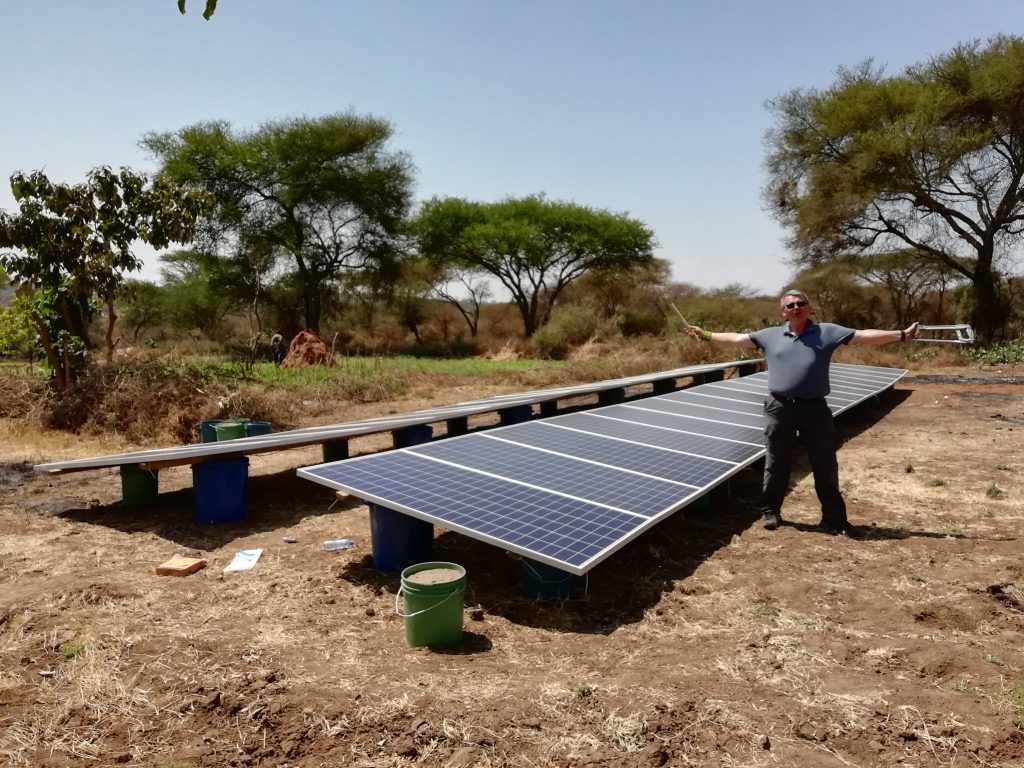
Whilst traditional solar panel systems are mounted on metal frames, these can be difficult, time-consuming and expensive to build. At a borehole in rural Tanzania in September, the Smart Villages team trialled a different solar mounting approach involving buckets, sand, wooden planks, cable ties and creativity.
This particular system consisted of 32x335W solar panels, 14×20 litre buckets, 14×40 litre buckets, 12×5 metre planks of wood and many, many cable ties. There were two different sizes of bucket in this design to allow the solar panels to lie tilted. We started off with a stretch of flat land near the borehole pump which was cleared of dead plants and debris.
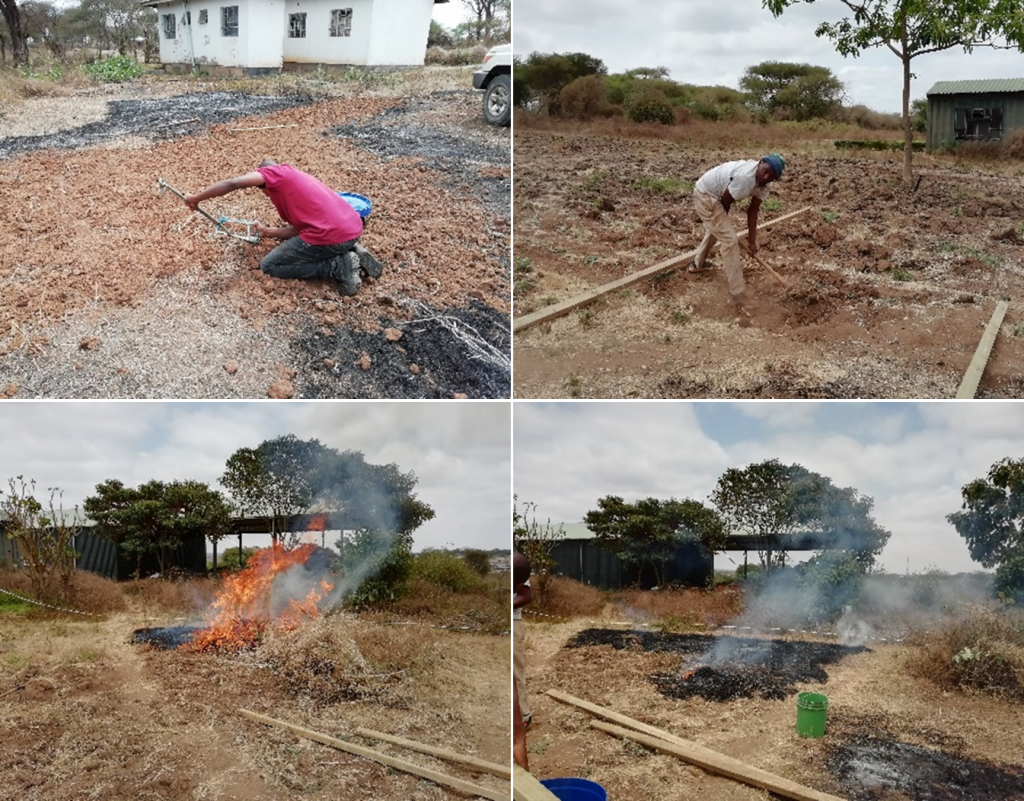
Following this, 28 buckets were filled with sand from the river nearby. Buckets are not in short supply in rural Tanzania. They are cheap, easy to transport and store, and can be surprisingly sturdy. They are used every day to collect water for households and store food such as maize.

Once these buckets were collected, filled, and arranged evenly spaced in rows, the wooden planks were placed across them. The planks were attached to the buckets with cable ties which were tied through holes drilled through the planks and buckets lids.
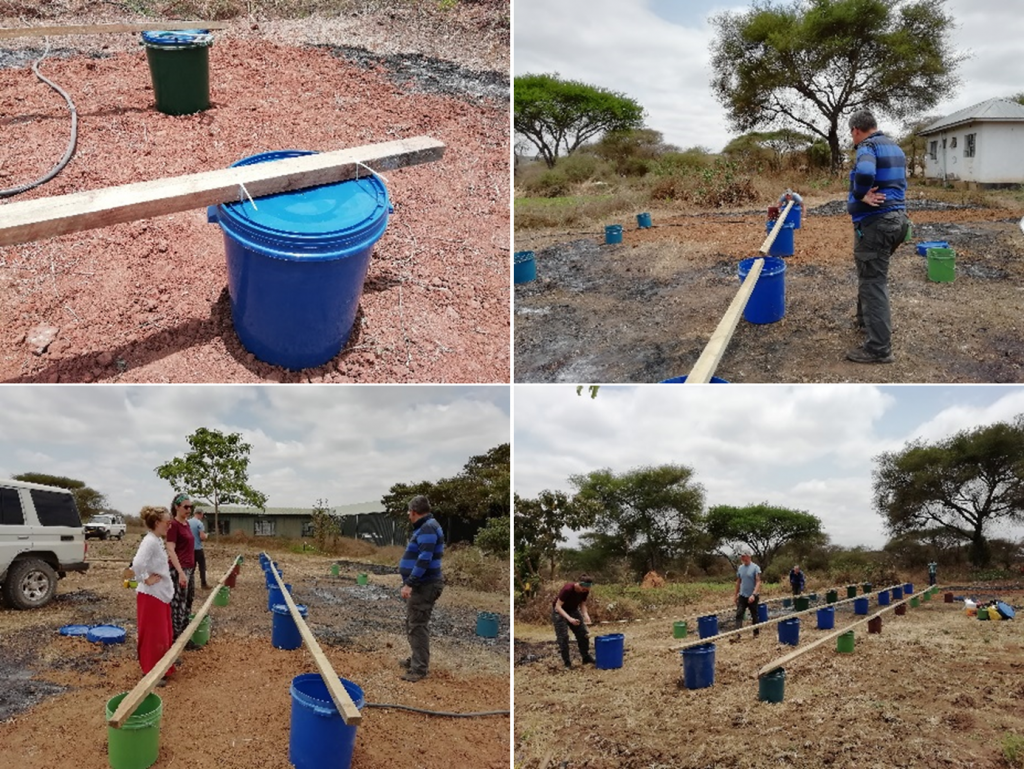
Once this step was complete, the solar panels were laid out across the wood and bucket frame. A lot of care was taken to line up the holes in the solar panel frame with the wooden planks so that they could be easily tied on, whilst ensuring that adjacent solar panels lay flush with one another.
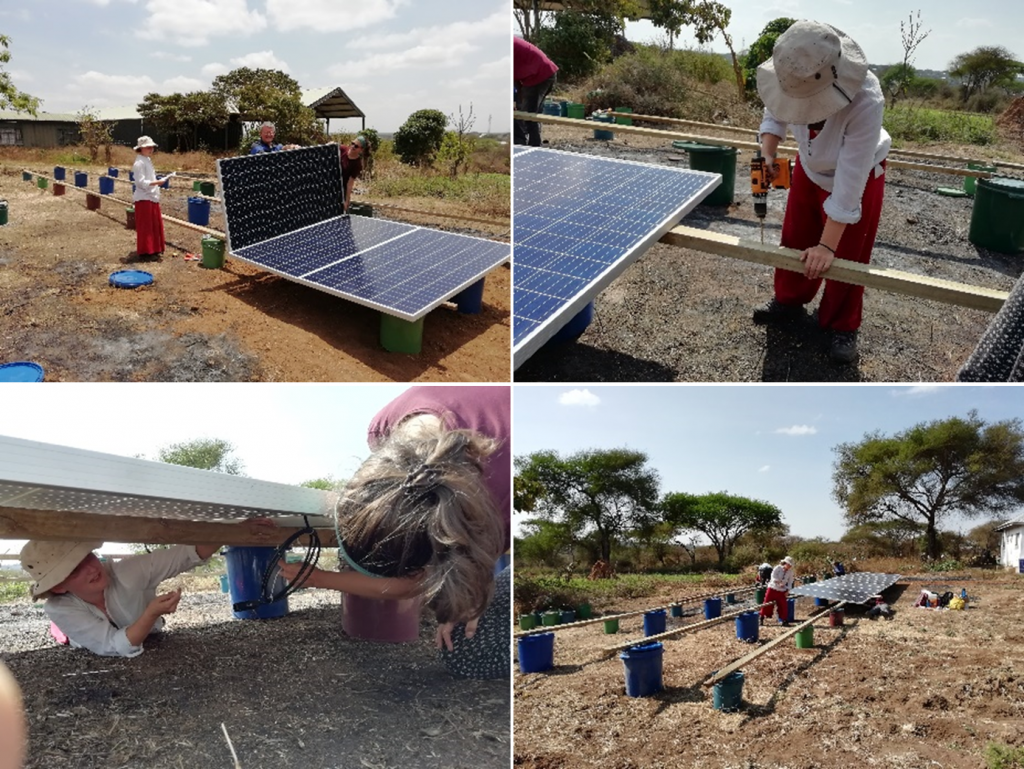
And there you have it! A simple, low-cost solar panel mounting system which was built in under 2 days and can be assembled easily by local partners. Whilst it is a low-tech solution, it has many applications, particularly in areas of humanitarian crisis or where a temporary energy system is required. It should be noted that it was only possible in this context because this is an area protected from grazing animals and which does not experience high winds. These conditions could be created with thorny fences and buildings or trees nearby. Once it was connected to the borehole pump, the energy generated was as efficient as the previous diesel generator, with the bonus of being silent, sustainable, and far cheaper.
